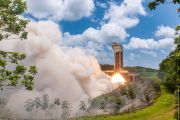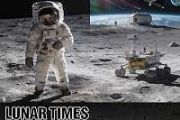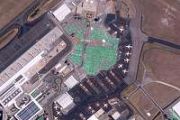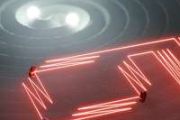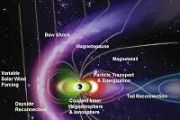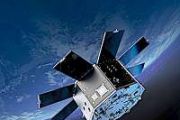
Copernical Team
First Arab woman to graduate NASA training shoots for the Moon
 Like her ancestors before her, Emirati astronaut Nora AlMatrooshi has spent much of her life gazing up at the stars and dreaming of flying to the Moon.
This week, she became the first Arab woman to graduate from NASA's training program, ready to blast off into the cosmos.
AlMatrooshi, 30, remembers an elementary school lesson about space in which her teacher simulated a trip to the lu
Like her ancestors before her, Emirati astronaut Nora AlMatrooshi has spent much of her life gazing up at the stars and dreaming of flying to the Moon.
This week, she became the first Arab woman to graduate from NASA's training program, ready to blast off into the cosmos.
AlMatrooshi, 30, remembers an elementary school lesson about space in which her teacher simulated a trip to the lu Firefly Aerospace Elevates STEM Education with DREAM Payload Launches
 Firefly Aerospace has unveiled the latest cohort of educational payloads destined for space aboard its Alpha rocket, marking a significant stride in its mission to broaden access to outer space. Through its pioneering Dedicated Research Education Accelerator Mission (DREAM) program, Firefly is set to propel CubeSats developed by the University of Illinois, Auburn University, and the Aerospace an
Firefly Aerospace has unveiled the latest cohort of educational payloads destined for space aboard its Alpha rocket, marking a significant stride in its mission to broaden access to outer space. Through its pioneering Dedicated Research Education Accelerator Mission (DREAM) program, Firefly is set to propel CubeSats developed by the University of Illinois, Auburn University, and the Aerospace an AI Enhances Detection of Tiny Space Debris, Paving Way for Safer Space Operations
 The escalating challenge of space debris in Low Earth Orbit (LEO) has sparked significant concern among space agencies and operators. With thousands of satellites, spent rocket stages, and fragments from disintegration and collisions whirling around the Earth, the risk of potentially hazardous collisions has never been higher.
Traditional radar and radio-telescope systems, while effective
The escalating challenge of space debris in Low Earth Orbit (LEO) has sparked significant concern among space agencies and operators. With thousands of satellites, spent rocket stages, and fragments from disintegration and collisions whirling around the Earth, the risk of potentially hazardous collisions has never been higher.
Traditional radar and radio-telescope systems, while effective Terran Orbital Secures Up to $45 Million NASA Contract for Space Technology Enhancement
 Terran Orbital Corporation (NYSE: LLAP) has announced its selection by NASA for an Indefinite-Delivery/Indefinite-Quantity (IDIQ) contract, boasting a ceiling value of $45 million. This contract is aligned with NASA's Space Technology Mission Directorate's goals, which encompasses the Flight Opportunities program and the Small Spacecraft Technology program, pivotal arms in the agency's push for
Terran Orbital Corporation (NYSE: LLAP) has announced its selection by NASA for an Indefinite-Delivery/Indefinite-Quantity (IDIQ) contract, boasting a ceiling value of $45 million. This contract is aligned with NASA's Space Technology Mission Directorate's goals, which encompasses the Flight Opportunities program and the Small Spacecraft Technology program, pivotal arms in the agency's push for Apex Launches Aries SN1, Marks a Milestone in Satellite Bus Production with Record-Breaking Build Time
 Apex, the innovative spacecraft manufacturing company based in Los Angeles, reports that 'Aries Serial Number 1 (SN1)', the first production unit of the Aries bus, has established bidirectional communication with ground stations, demonstrating its operational health in orbit. This successful orbital deployment follows its launch aboard SpaceX's Falcon-9 rocket on March 4.
The Aries platfor
Apex, the innovative spacecraft manufacturing company based in Los Angeles, reports that 'Aries Serial Number 1 (SN1)', the first production unit of the Aries bus, has established bidirectional communication with ground stations, demonstrating its operational health in orbit. This successful orbital deployment follows its launch aboard SpaceX's Falcon-9 rocket on March 4.
The Aries platfor University Experts Call for Enhanced Radiation Warnings in Space Tourism
 In a groundbreaking study led by space weather experts at the University of Surrey, there's a growing call for immediate action to safeguard the burgeoning space tourism industry from the invisible threat of cosmic radiation. The study, recently published in Space Policy, emphasizes the urgent need for collaboration between regulators and space tourism companies to enhance passenger and crew pro
In a groundbreaking study led by space weather experts at the University of Surrey, there's a growing call for immediate action to safeguard the burgeoning space tourism industry from the invisible threat of cosmic radiation. The study, recently published in Space Policy, emphasizes the urgent need for collaboration between regulators and space tourism companies to enhance passenger and crew pro NASA selects Momentus for a five-year contract to enhance space operation technologies.
 Momentus Inc. (NASDAQ: MNTS), a leader in the new field of in-space transportation services, has reportes its selection by NASA to receive a significant indefinite-delivery/indefinite-quantity (ID/IQ) base contract. This award positions Momentus as a pivotal player among 15 companies chosen to support the United States' space exploration and technology advancement efforts over the next five year
Momentus Inc. (NASDAQ: MNTS), a leader in the new field of in-space transportation services, has reportes its selection by NASA to receive a significant indefinite-delivery/indefinite-quantity (ID/IQ) base contract. This award positions Momentus as a pivotal player among 15 companies chosen to support the United States' space exploration and technology advancement efforts over the next five year Sidus Space and Spire Global Satellites Soar into Orbit with SpaceX's Transporter-10 Mission
 Sidus Space (NASDAQ: SIDU) and Spire Global, Inc. (NYSE: SPIR) have both reported the successful launch and deployment of their satellites aboard SpaceX's Transporter-10 Rideshare mission. The mission, which took to the skies from the Space Launch Complex 4 East at Vandenberg Space Force Base in California, marked a significant step forward for both companies in expanding their space-based capab
Sidus Space (NASDAQ: SIDU) and Spire Global, Inc. (NYSE: SPIR) have both reported the successful launch and deployment of their satellites aboard SpaceX's Transporter-10 Rideshare mission. The mission, which took to the skies from the Space Launch Complex 4 East at Vandenberg Space Force Base in California, marked a significant step forward for both companies in expanding their space-based capab New theory explains why white dwarf stars can cheat death
 In a paper published in Nature, scholars from the Institute for Advanced Study; the University of Victoria, Canada; and the University of Warwick, U.K., have proposed a new theory that explains why a puzzling population of white dwarf stars stopped cooling for ten billion years.
Open any astronomy textbook to the section on white dwarf stars and you'll likely learn that they are "dead star
In a paper published in Nature, scholars from the Institute for Advanced Study; the University of Victoria, Canada; and the University of Warwick, U.K., have proposed a new theory that explains why a puzzling population of white dwarf stars stopped cooling for ten billion years.
Open any astronomy textbook to the section on white dwarf stars and you'll likely learn that they are "dead star Space research sheds new light on formation of planets
 An international team of astronomers has shed new light on the fascinating and complex process of planet formation. Using the European Southern Observatory's Very Large Telescope (ESO's VLT) in Chile, researchers captured stunning images of more than 80 young stars and discs of dust and gas where planets are forming.
The research represents one of the largest surveys ever of planet-forming
An international team of astronomers has shed new light on the fascinating and complex process of planet formation. Using the European Southern Observatory's Very Large Telescope (ESO's VLT) in Chile, researchers captured stunning images of more than 80 young stars and discs of dust and gas where planets are forming.
The research represents one of the largest surveys ever of planet-forming 












